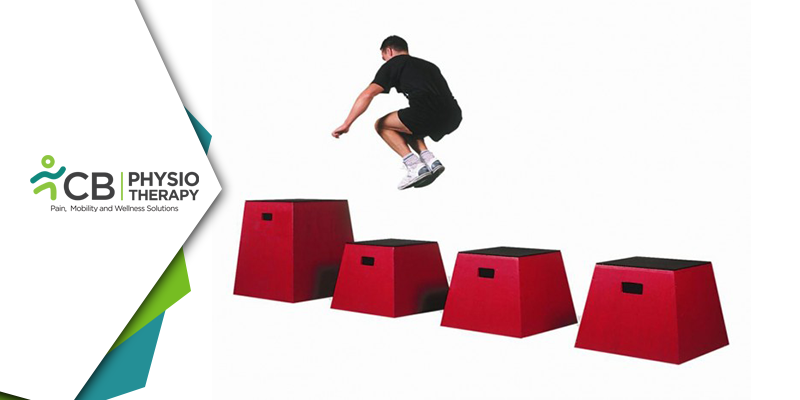In modern-day fitness, Plyometric training has now been incorporated into the exercise training program. Plyometric exercises are powerful aerobic exercises used to increase muscle strength and endurance, thus requiring an individual to exert their muscles to the maximum potential in short periods. Plyometric exercises help to lose fat, run faster, jump higher, hit harder, and reduce the risk of injury. These exercises have become an important aspect of physiotherapy training regimens. In this blog. we have discussed Plyometrics and its benefits.
What is Plyometrics?
Plyometrics also known as jump training, is usually geared towards highly trained athletes or people in peak physical condition, or those people who wish to improve their fitness. Frog hops, squat tuck jumps, broad jumps, star jumps, lateral hops, etc are some examples of plyometrics. Plyometrics are effective in improving vigorous movements as they take advantage of opposing muscle contractions. These contractions occur when the muscles are shortened or lengthened. Force is produced on both sides of these muscle contractions. The three major segments include:
Eccentric Contractions: This is when the muscles are stretched and lengthened while producing force. The stretched muscle stores potential energy in its elastic components. This is the loading or absorption phase.
Amortization Phase: This is the phase between the eccentric and concentric contractions of the muscle. Dynamic stabilization occurs as the muscle rebounds from storing the energy to releasing it.
Concentric Contractions: In this phase, the muscles are shortened while force is still produced. The stored force is released in this phase, which helps in propelling. For example during jumping movements. The landing portion of the jump causes the muscles to lengthen i.e eccentric contraction and while the jumping portion of the exercise is when the muscles are shortened, causing the concentric contraction.
Benefits of Plyometrics
There are multiple benefits of plyometrics including the enhanced performance of muscles, nerves, and tendons.
Quicker Nerves: Plyometrics involve different contraction forces, which result in sending messages to the brain through the neuromuscular system. As plyometrics revolves around quick and explosive movements, therefore the neuromuscular system has to work in overdrive to improve its function by enabling contraction and relaxation of the muscles quickly.
Stronger Tendons: Plyometrics training exercises require strong tendons because the movements are fast and powerful. By performing plyometrics an individual builds up the strength and elasticity in the tendons which might help, to avoid injuries.
Stronger Muscles: Due to the nature of plyometrics exercises, muscle fibers must convert strength into speed. These exercises can strengthen and increase the amount of fast-twitch muscle fibers in the muscles. The stronger and more abundant fast-twitch muscle fibers result in faster muscle contraction.
Improve the Performance: Plyometric exercise training can enhance physical power. These exercises increase vertical jump height and long jump distance, reduce sprint time, improve running, enhance joint position awareness and lead to better postural control.
Injury Reduction: Strengthened tendons cause fewer injuries. Plyometrics done in combination with dynamic stabilization exercises also reduces ligament injury risk.
Weight loss, Burns Calories & Reduces Fat: Plyometrics requires the body to produce a lot of force and power to propel the body weight off the ground. These movements require the muscles to consume a lot of energy leading to more calories burned in shorter periods. The high intensity of plyometric exercises enables an individual to burn more calories post-exercise as it can end up in excess post-exercise oxygen consumption up to 48 hours after plyometric training.
Plyometric exercises can cause stress to the tendons, and ligaments, thus it's important that an individual has the strength and fitness level necessary to do these exercises safely and effectively. While adding plyometric exercises slowly increases the duration, difficulty, and intensity of the exercises. It's important to keep the short time in between these two segments to reap the most benefits of doing plyometrics.

